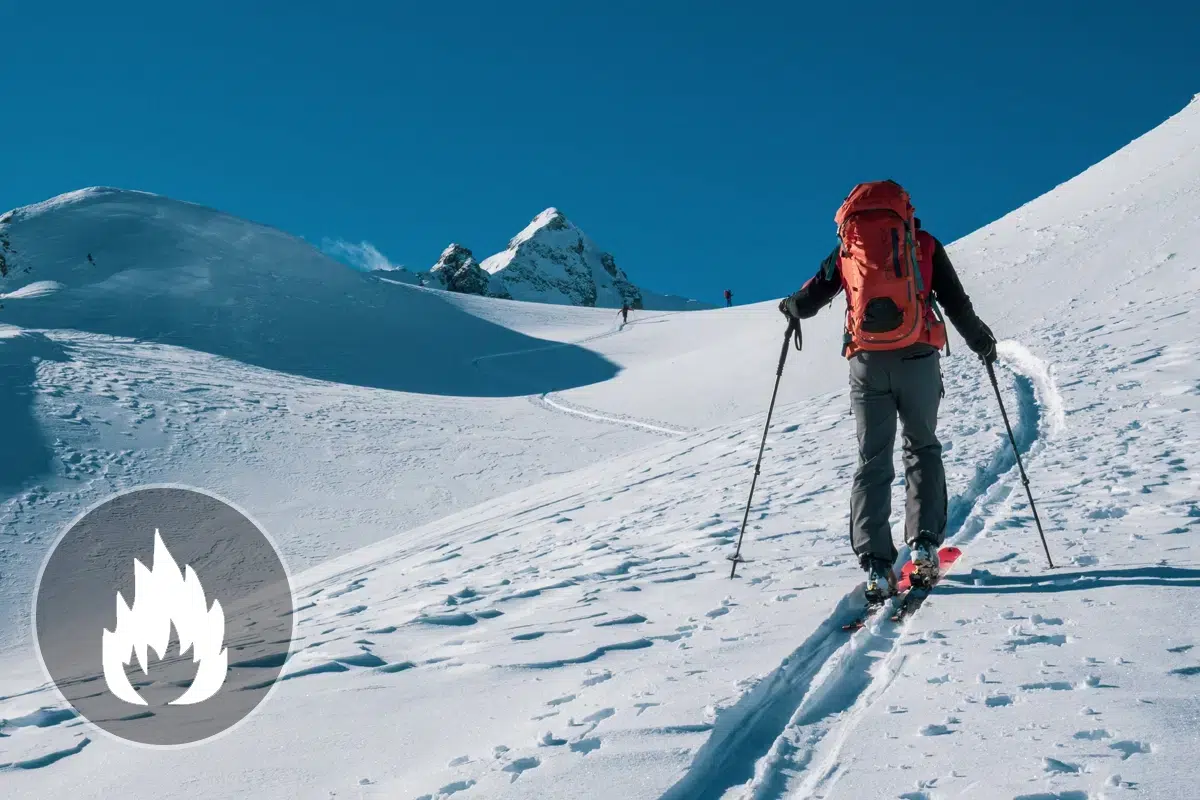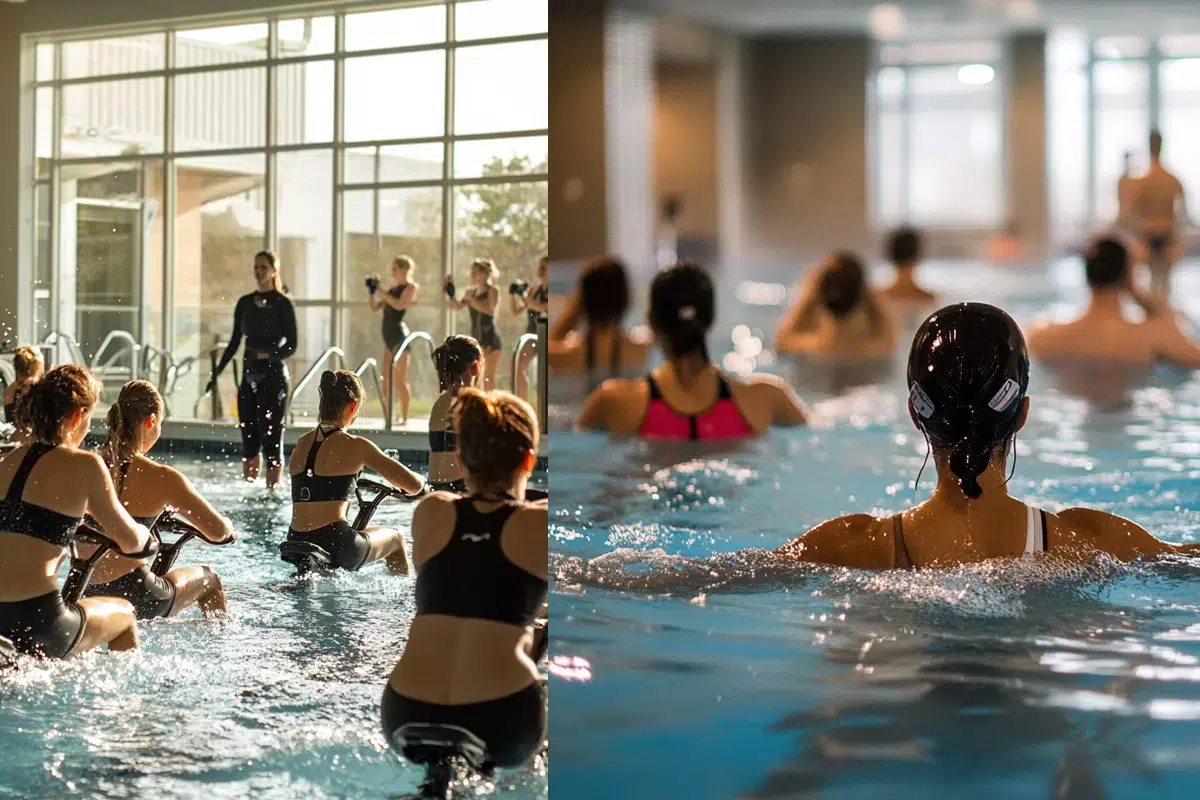Show summary Hide summary
How many calories do we burn doing cross-country skiing?

Everything you need to know about cross-country skiing
🎿 Curious about the calories burned in cross-country skiing, ski touring or ski trekking? Enter your details (age, weight, height) and time (30 mins to 1 day) to get your results.
Discover other REGIVIA calculators:
Cross-country skiing: A few examples of energy expenditure depending on weight and activity time.
Use the table below to see how many calories you lose when cross-country skiing!
Cross-country skiing
Moderate intensity
Kilocalorie expenditure
| Weight | 15 minutes | 30 minutes | 1 hour |
|---|---|---|---|
| 40 kg | 74 | 147 | 294 |
| 50 kg | 92 | 184 | 368 |
| 60 kg | 110 | 221 | 441 |
| 70 kg | 129 | 257 | 515 |
| 80 kg | 147 | 294 | 588 |
| 90 kg | 165 | 331 | 662 |
Cross-country skiing
High intensity
Kilocalorie expenditure
| Weight | 15 minutes | 30 minutes | 1 hour |
|---|---|---|---|
| 40 kg | 84 | 168 | 336 |
| 50 kg | 105 | 210 | 420 |
| 60 kg | 126 | 252 | 504 |
| 70 kg | 147 | 294 | 588 |
| 80 kg | 168 | 336 | 672 |
| 90 kg | 189 | 378 | 756 |
See detailed calculations and metabolic equivalent for cross-country skiing
Everything you need to know about cross-country skiing
FIND OUT MORE ABOUT CROSS-COUNTRY SKIING
Who said that cross-country skiing was a quiet sport for little players?
On the contrary, if there’s one sport that expends a lot of energy, it’s cross-country or touring skiing.
It tones the body as a whole, helping to maintain a good figure and, for nature lovers, it combines the useful with the pleasurable. So don’t hesitate, this sport will give you back your dream body and your contemplative nature spirit.
Cross-country skiing is a winter activity practised on snow-covered surfaces. This form of skiing is characterised by the fact that the heel of the ski is not attached to the boot, allowing a more natural gliding movement. Cross-country skiing is generally practised on specially groomed tracks, either in classic style (alternating stride) or freestyle (skating stride).
Some benefits of doing cross-country skiing:
- Muscular strengthening: Cross-country skiing uses many of the body’s muscles, particularly those of the legs, buttocks, back and arms. This helps to strengthen and tone the whole body.
- Improved endurance: Cross-country skiing is an aerobic activity that stimulates the cardiovascular system and improves endurance. The continuous sliding movement combined with the effort made during propulsion helps to develop good cardiorespiratory capacity.
- Burn calories: Cross-country skiing is a high-energy activity. Depending on the intensity of the effort and the duration of the session, it is possible to burn a large number of calories, making it an ideal activity for maintaining a healthy weight.
- Balance and coordination: Cross-country skiing requires good balance and precise coordination between arm and leg movements. Regular cross-country skiing can improve these skills and encourage better body coordination.
- Stimulation of mental health : Cross-country skiing is often practised in the great outdoors, offering an immersive and relaxing experience. This can help reduce stress, improve mood and promote an overall sense of well-being.
- Interaction with the environment: Cross-country skiing allows you to enjoy magnificent winter landscapes and discover unspoilt natural areas. It’s an opportunity to connect with nature, observe wildlife and enjoy the peace and tranquillity of the snow-covered environment.
In conclusion, cross-country skiing is a complete activity that offers many benefits for body and mind. Whether it’s for physical training, relaxation in the great outdoors or the pleasure of gliding across the snow, cross-country skiing is an excellent way to enjoy the joys of winter while taking care of your health.
How to calculate the number of calories burned doing cross-country skiing
The result displayed is expressed in Kcal and is calculated using the MET (Metabolic Equivalent of Task). The MET for each activity is the result of statistical data and cannot therefore be interpreted as an exact calculation, but rather as an estimate that takes into account the MET value and the ratio between the time spent doing an activity and the weight of the individual.
For example: The MET value for cross-country skiing is 7 at a moderate pace. This means that a person doing moderate skiing consumes 7 times more energy than when resting.
MET values for different levels of cross-country skiing intensity
- Moderate ski touring 7k/h: MET = 7
- Intense ski touring 10.5k/h: MET = 8
Discover the detailed formula to calculate your daily energy expenditure while doing cross-country skiing
Consumption in Kcal per minute = (METs*3.5*Weight in kilos)/200
This gives for a person weighing 70 kilos for 30 minutes:
Consumption in Kcal per minute = (8*3.5*70)/200 = 9.8 Kcal/min
So for 30 minutes = 9.8*30 = 294 kcal for 30 minutes
All sports in detail!



















































